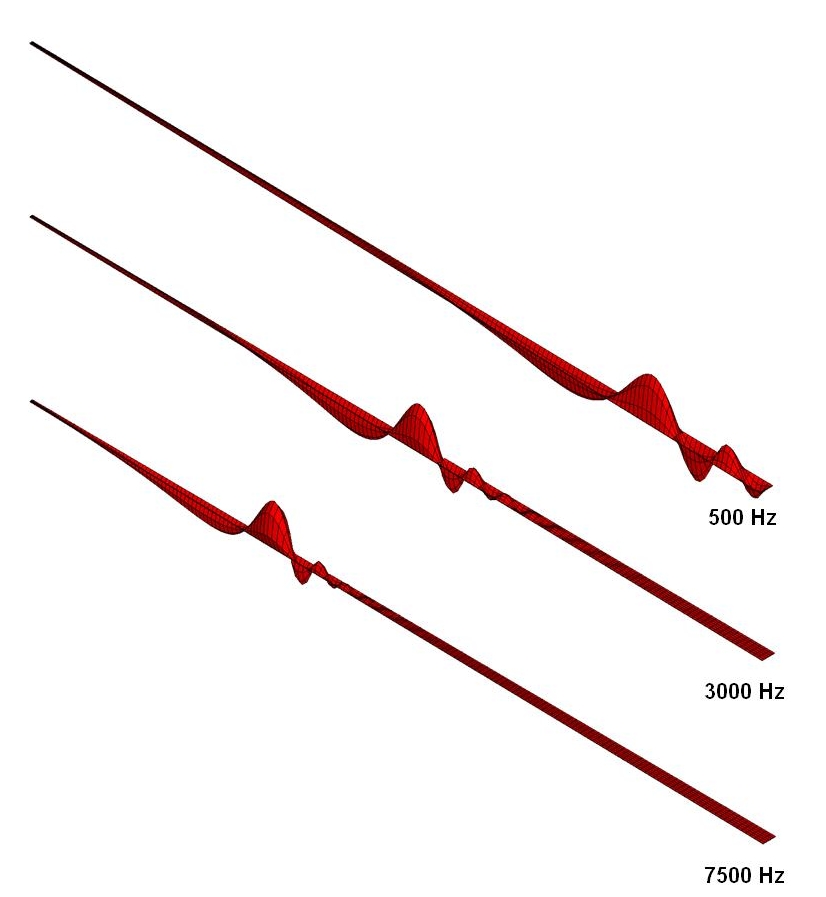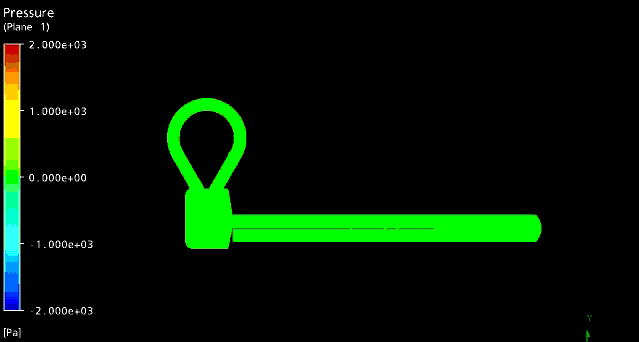 |
|
||||||||||||||||||||||||||||||||||
|
|||||||||||||||||||||||||||||||||||
|
|
||||||||
Project Description
The hearing process is governed by air pressure fluctuations in the outer ear and tympanic cavity, spatial motion of ossicles of the middle ear, and by pressure propagation within inner ear fluids as well as the interaction of those fluids with the basilar membrane, inducing traveling waves. The position of the maximal amplitude of those waves in the basilar membrane are determined by the frequency of the received sound and characterize the tonotopy of the cochlea. The inner ear has two main functions, one is related to the detection of linear and angular accelerations. This function is a task of the vestibular organ (composed by the semicircular canals). The other function is the sound perception process and happens in the cochlea. Generally speaking, the inner ear works as a transducer transforming the pressure variation collected by the outer ear into nerve impulses to be sent to the brain. Arranged on a spiraled geometry with around 2.5 turns, the cochlea contains three fluid-filled chambers (scala vestibuli, scala tympani and scala media). The scala vestibuli and the scala tympani are filled with perilymph, and communicate with the middle ear through the oval and round window, respectively. The oval window is an opening sealed with stapes footplate and annular ring located on the vestibulum, and the round window is a flexible membrane located in the basal part of the scala tympani. These two scalae are connected by the helicotrema, a hole sited in the apical region of the cochlea. The scala media is filled with endolymph and is sited along the coils, between the scala vestibuli and scala tympani. Its boundary to the scala vestibuli is given by a flexible structure, called Reissner's membrane, while its boundary to the scala tympani is given by the basilar membrane. In the scala media are contained the essential components for the sense of hearing, the Corti's Organ and the tectorial membrane. The motion of basilar membrane and Corti's organ stimulates the inner hair cells to send electrical signals to the brain giving the sound perception. Another process that takes place in the Corti's organ is the active amplification due to the contraction of the outer hair cells. It is a nonlinear behavior of the cochlea in order to produce basilar membrane motions even for low sound levels. The aim of this project is to develop a numerical model based on finite element method for the inner ear considering its geometric characteristics and the tonotopy in the basilar membrane. In this project are investigated the influence of geometric parameters as well as the effects of the three-dimensional motion of stapes in the sound perception. Modeling of pathological and reconstructed ear are also investigated in this project. To investigate the influence of geometry in the behavior of the inner ear, a three-dimensional geometric model based on medical images was generated. Based on micro-CT data, histological data and literature information of temporal bones a geometric reconstruction of the inner ear was realized and used in the spatial discretization for the computational model. Modeling of systems containing fluid-structure interaction with deformable interface domains involves considerations in terms of media constitution as compressibility and flexibility of the fluid domain, flowing or stagnant fluid, continuum or shell modeling for structural domain and the fluid-structure interaction approaches. For modeling the inner ear the finite element method is used for structural domains, and for the fluid domain are used finite element and finite volume methods. For the coupling of both domains, weak and strong coupling algorithms are investigated. The partitioned and monolithic FSI approaches are used dealing within strong coupling algorithms. The proposed model permits not only the investigation of normal and pathological behaviors of the inner ear, but also of a fully coupled ear model. Such macro approach of the complete system allows the development of new diagnostic procedures for hearing losses. Another contribution is the improvement of middle ear active and passive prosthese, based on the three-dimensional behavior of stapes and its effects in the inner ear. The model validation is realized comparing the results from simulations with experimental results obtained in laboratory and clinical observations and measurements. Due to restricted accessibility to the inner ear and possibility of influence in the inner ear behavior, the experiments are realized trying to keep the inner ear intact. In that way, the used experimental results are mainly displacements of round window and stapes footplate, for excitations in the audible range of frequency. Contact |
| Last modified
11.1.2018 ( |

